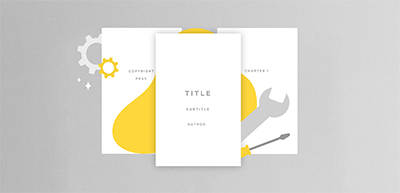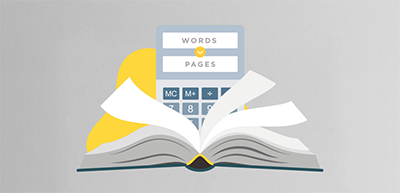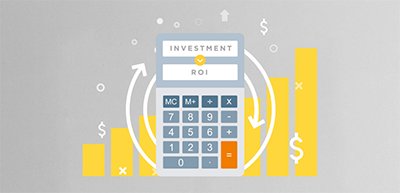Book Profit Calculator
Book Profit Calculator
Enter Your Information Below To Calculate
Your Potential Book Sales
Enter your details below to see your personalized book profit estimate!
CONGRATULATIONS
Here's What You'd Earn:
Your profit per book: $20
In 3 months, you'll make: $90,000
In 6 months, you'll make: $180,000
In 1 year, you'll make: $365,000

How to Calculate Book Profit With a Book Profit Calculator
Your book’s profit is important.
Obviously you have a few different reasons to write a book but ultimately, no matter your “why”, you still want to make a return on what you’re working so hard on accomplishing.
That’s where your book’s profit comes into play.
Most people know that you don’t get to pocket the full price of your book when you sell it. There are costs factored in to that, including your royalties percentage. And this can vary widely depending on if you self-publish on Amazon or go the traditionally published route.
Use this list of book royalties in order to calculate how much you can price your book at and how much you’ll take home as a result:
| Royalties | Self-Publishing on Amazon | Traditionally Publishing |
| Paperback Royalty Rate | 40% – 60% (details here) | 8% for the first 150,000 copies sold, 10% thereafter |
| Kindle/E-Book Royalty Rate | 35% – 70% depending on your book’s pricing (details here) | 25% – 50% depending on the publisher and deal agreed upon |
| Audiobook Royalty Rate (for ACX) | 20% – 40% | |
| Hardback Royalty Rate | About 25% depending on your book’s size, print type, etc. | 10% for the first 5,000 copies sold, 12.5% thereafter |
How much money do authors make?
The amount of money authors makes varies greatly depending on the royalties percentage, whether they’re traditionally or self-publishing, and how much they put into their book’s success.
That being said, maybe authors can make a full-time living from self-publishing their books.
Like stated above, the profit authors make from their books heavily relies on these factors:
- If they’re traditionally or self-published
- How many books they have published
- How many versions of the book they have (paperback, hardcover, audiobooks, e-book)
- The price of their books
- How many books they sell consistently
- Their Amazon Bestselling Author ranking (this is a huge plus for book sales!)
- BONUS: how much work they’re putting in to sustaining their book sales (via book marketing tactics, etc.)
There are self-published authors who can make a living writing with a sustainable income of $5,000 per month to $8,000 per month, so even self-published authors who make an excess of $10,000 per month.
Now, this income does not happen overnight but by planning ahead and knowing how much you want to make, you can set yourself up to hit those numbers by developing a thorough plan to make it happen.
So fill out the book profit calculator above if you want to know how much money you can make from your books.
Remember to use our royalties guidelines above to calculate accurately!
How to Make Money as an Author
You can make money from your book profits as an author. While it may seem scary or even intimidating at first, with the right steps and the right process, you can earn a consistent income from your book sales.
Here are the steps necessary to earn a living as an author.
#1 – Find the right system
The process you use does matter. It’s not enough to publish a book and stick it on Amazon.
There’s a very specific process an author should follow in order to make consistent money from their books.
For these purposes, we’ll be touching on the self-publishing method, as we think that’s the most lucrative option of the two.
First answer these questions:
- Do you know how the Amazon algorithm works?
- Do you know how to optimize your book’s description for Amazon search?
- Do you know how to optimize your book’s description to sell (at the same time as search)?
- Do you know how to optimize your book title for sales?
- Do you know which categories to place your book in for the highest chance of sales?
- Do you know how to optimize to become an Amazon Bestselling Author (which increases sales)?
If the answer to most, if not all, of these is “no”, then you will highly benefit from a proven system to ensure that all the hard work you’ve put into your book actually pays off.
We have that system for you.
NOTE: Just sign up for this free training to learn what it really takes to do all of this and maintain a consistent income from your books (and make that book profit calculator result a reality!).
Sign up here!
#2 – Write more than one book
Authors who make the most money from their book profits have several books published, and not just one.
Whether you’re writing fiction novels or nonfiction books, this still remains true.
The math here is very simple. The more books you have, the more chances of a sale you have and this will increase the overall income from your books.
Not to mention the fact that if you write a series, you will have the same person buying the next book…and this is a great way to generate a fan-base that will buy every book you publish.
#3 – Publish several forms of your books
As mentioned above, publishing several forms of your book is a great way to make money as an author.
Why?
Because this broadens your target audience.
Many people don’t actually like reading even though they want to learn what you have to share or hear your story. And that means those people won’t likely purchase your book if you only have an ebook or paperback version available.
However, by publishing an audiobook, you’re increasing the likelihood of acquiring more sales from an audience who otherwise wouldn’t buy.
Some super fans will even buy every format you publish simply because they want to support your and have all of them.
#4 – Market your book effectively (and continuously)
The #1 mistake authors make that essentially lights money on fire is not marketing their books consistently and effectively.
The work doesn’t end simply because you published a book, and even if you’re pursuing the traditional route, you are still responsible for book marketing.
Here are some best practices for marketing your book:
- Build your author platform on social media
- Regularly post content relevant to your niche
- Use relevant hashtags to expand your reach
- Host giveaways that include sharing a post about your book
- Build a book launch team you can use repeatedly
- Build your email list to market to
- Reach out to appear on interviews or podcasts
- Reach out to book clubs and recommend your book
- Champion and ask for book reviews
- Ask for book endorsements (and put them on your cover!)
If you stay consistent with these methods, and some listed in this blog post about boosting low book sales, you’ll be off to a great start.
#5 – Find accountability to stay consistent
It’s not that this process is necessarily difficult, especially if you sign up with Self-Publishing School and have a clear step-by-step list for executing it.
The difficult part is actually doing the work…and that’s made so much easier through an accountability system.
Here at Self-Publishing School, we not only pair you with a personal coach to help you through the process, but you also have access to our Mastermind Community on Facebook where you can connect with others to stay accountable.
But you can also find accountability elsewhere.
Here are some options to find an accountability system to stay consistent with your book sales:
- Connect with people in online writing groups (including Facebook groups)
- Connect on Twitter
- Research local, in-person writing or author meet-ups
- Create a goal tracking system
There are several ways you can increase your book profit. If your goal is to create consistent, passive income, these are the ways to do it.
MORE TOOLS

Book Outline Template Generator

Word/Page Count Calculator
